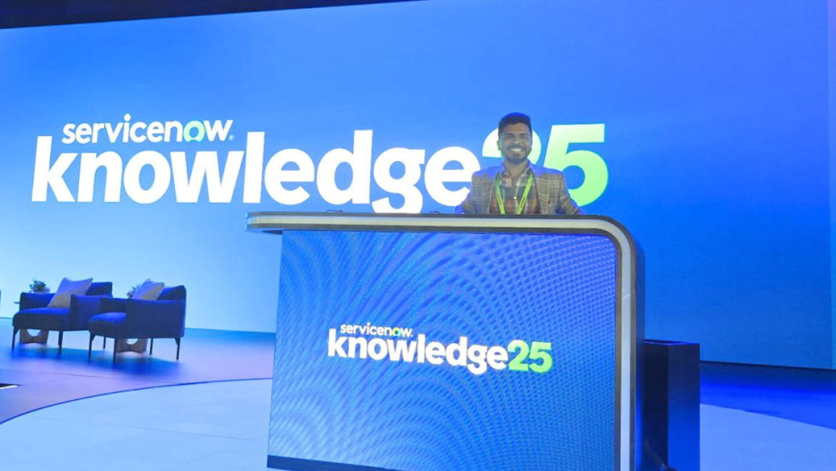
Enterprises across the globe are under greater pressure than ever to transform their IT environments. With business resilience and agility now urgent priorities in an unpredictable landscape, the mandate to future-proof technology systems has moved from IT departments straight to the boardroom. Today, success depends on how well organizations can anticipate change, adapt swiftly, and enable growth in a world where innovation is constant and disruption is the new normal.
Shaping Scalable IT for Dynamic Industries
Enterprise IT leaders now focus less on chasing the latest tech trend and more on building systems that can scale, handle stress, and adapt as needs change. Venkata Surendra Reddy Narapareddy has practiced this approach for years. A U.S.-based ServiceNow enterprise architect, Narapareddy develops systems designed for durability, flexibility, and measurable performance.
His work has improved operations in the healthcare, government, and finance industries, which deal with daily complexity. He designs his solutions so teams can update and expand them as requirements evolve. He builds these systems to grow with organizations rather than restrict them.
Narapareddy's 2025 research, "Federated Learning and Privacy-Preserving AI," published in the International Research Journal of Modernization in Engineering Technology and Science, demonstrates his commitment to cutting-edge security frameworks for distributed systems—principles he applies directly to enterprise architecture design.
In addition to his leadership as Chief ServiceNow Enterprise Architect at PurpleWeb, a firm recognized for innovative, client-focused digital transformations, Narapareddy is widely admired by enterprise clients, such as Children's Health, the State of Tennessee, True Blue, and others, for his commitment to scalable solutions. Narapareddy avoids short-term workarounds or one-off fixes. At Children's Health of Texas, where he leads ServiceNow architecture, he built an infrastructure that helps clinical and administrative teams manage onboarding, compliance, and day-to-day operations more efficiently.
He focuses on saving the hospital's medical staff time by reducing unnecessary digital tasks and ensuring systems support their work without getting in the way.
"Speed matters, especially in healthcare," explains Narapareddy. "Speed creates stability and scalability when supported by the right structure."
Measuring Impact and Shifting Industry Standards
His solution led to strong results. The hospital cut service-level agreement violations by more than 60 percent, and the team rolled out new workflows faster using standardized low-code components. The setup made it easier for staff to get the needed resources without delays.
Gartner projects global IT spending will grow by eight percent in 2024, primarily because organizations are investing more in software, cloud platforms, and enterprise automation. This shift highlights the growing need for scalable systems like those Narapareddy builds.
Building Systems That Travel Well
Narapareddy developed a framework connecting ServiceNow with tools like Salesforce, Twilio, VMware, and ScienceLogic. He originally built it for Children's Health and True Blue, a staffing firm, but others also began using it for asset tracking, ticketing, and compliance.
Rather than embedding business logic directly into code, he used configuration layers that teams can adjust without rewriting the system.
His 2025 research on "Modular Foundation of a Blueprint Model," published in the International Journal of Engineering Technology Research & Management, presents architectural frameworks for scalable system design, reflecting the same modular, configuration-driven philosophy he implements in enterprise deployments.
"True scalability means your system can adapt—not just today, but six months, even six years from now," he explains. "Otherwise, you are just painting over cracks."
Clients using the framework saw manual provisioning drop by more than 70 percent. Consulting firms in North America and Asia have adopted it as their standard deployment approach.
Reusability That Saves Time and Resources
Narapareddy treats repeatable architecture as a necessity. Teams can copy and adjust the systems he builds across departments, regions, or clients without starting from zero each time. This makes implementation faster and helps keep data and processes consistent.
One program manager said, "His framework did not just help us scale—it let us replicate success at speed."
His design approach reduced duplication, improved audit readiness, and gave teams better control over system performance. It is now used by hospitals, public agencies, and large businesses that need reliable platforms for daily operations.
Sharing
Narapareddy has delivered presentations at the ServiceNow Knowledge Conference three years in a row, where he spoke about structuring systems to support long-term change in large organizations. Some of his session titles reflect the depth and impact of his work, including "Unified ServiceNow Architecture for Public Sector Transformation," "Modernizing Healthcare IT With Reusable Frameworks," and "Orchestrating Scalable Automation Across Platforms."
He also presented at the Salvation of Knowledge Conferences, Support World Conferences, and GeoHolics, outlining strategies that apply across different industries.
These events have helped spread his ideas. Attendees have used his methods in their work, showing their relevance beyond just one organization or sector.
He is an active member of the International Association of IT Professionals (IAITP), where he participates in knowledge sharing and industry collaboration initiatives focused on advancing enterprise technology solutions. Venkata also served as a jury member for the BrainTech Awards 2023, contributing his expertise to evaluate technology innovations across multiple industry categories. His participation in this recognition program and his IAITP membership reflect his standing as a trusted authority in enterprise technology architecture and his engagement with the global technology community.
Results That Travel
The onboarding framework he created reduced access time by more than 50 percent at multiple organizations. New employees received the tools they needed on their first day.
The State of Tennessee brought Narapareddy to help 20 government agencies adopt a shared ServiceNow system. That setup lowered resolution times by 60 percent and sped up change approvals by automating risk checks. Since then, other state departments and consulting partners have followed the same model.
"These improvements are not just operational," Narapareddy notes. "They are cultural. They change how organizations think about agility and accountability."
Planning for the Long Term
Narapareddy focuses on building systems that can evolve. His clients choose him because his solutions address today's needs while leaving room to grow in the future.
"You can not design for today and expect it to last," he adds. "Real architecture is about respecting the long game."
Why Durable Systems Win
When designed well, scalable systems give businesses a real advantage. Narapareddy's work shows that companies can proliferate and meet regulatory and technical needs. His frameworks help them avoid breakdowns as they expand.
He has also judged tech awards and contributed to professional publications focused on enterprise IT. These roles reflect how others in the field view him—as someone who delivers solutions that work across industries and over time.
That is what solid engineering looks like.
ⓒ 2025 TECHTIMES.com All rights reserved. Do not reproduce without permission.




